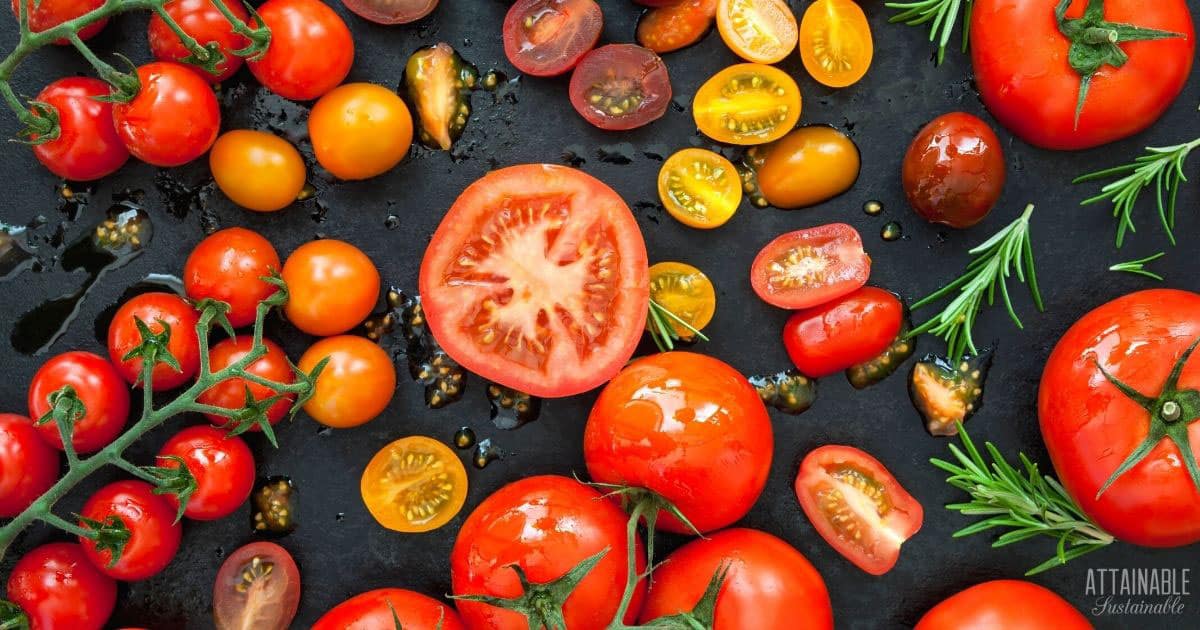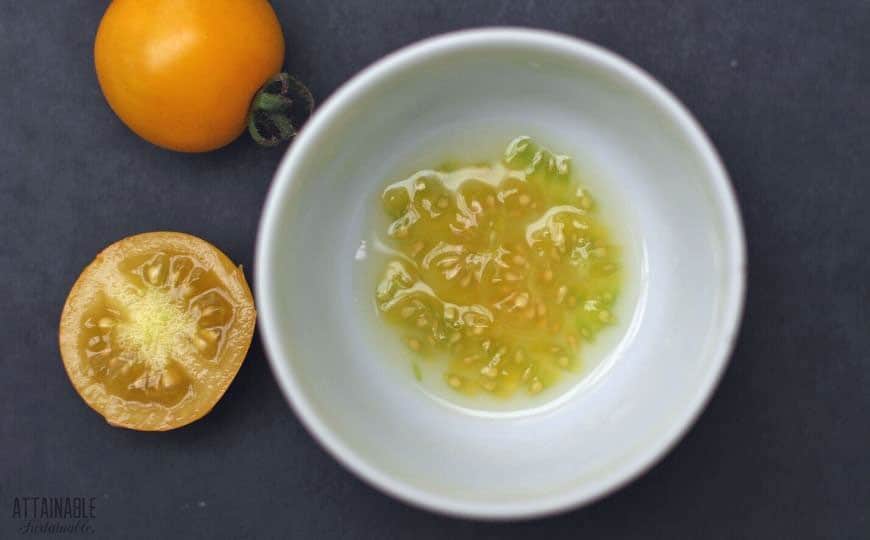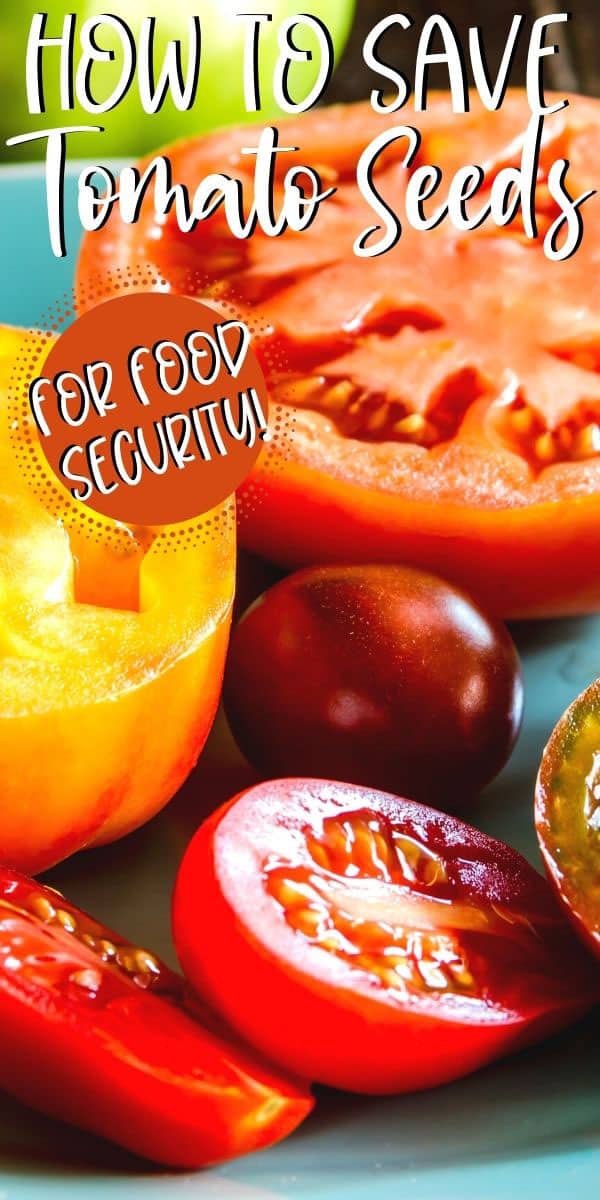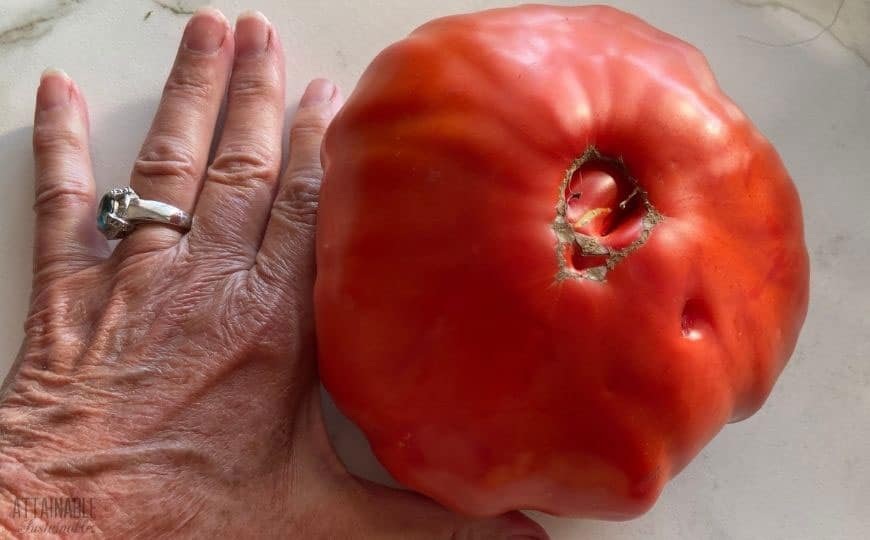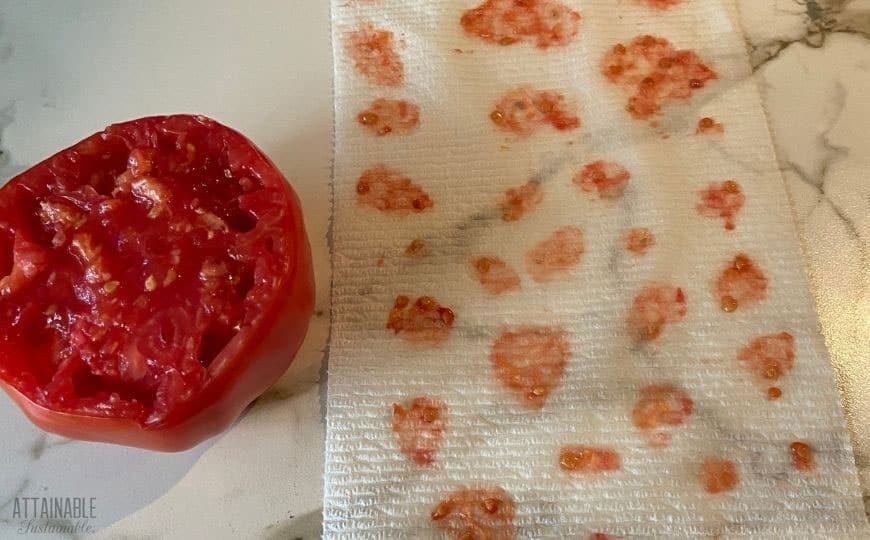Saving tomato seeds is a gardening tradition and, thanks to gardeners from the past, we still have seeds for many heirloom varieties that might have otherwise disappeared from the landscape. Continue reading to learn how to save tomato seeds from your garden!
Contributed by Jodi Torpey, author and Master Gardener, in October 2020; this post has been updated.
It was so much fun to grow a 2-pound Giant Belgium heirloom tomato plant, that I decided to save some seeds for next year.
The fruit is dense and meaty with a deep beefsteak tomato taste and a nice citrusy aftertaste. It was sweet enough to help me understand how it would make delicious tomato wine.
These tomatoes deserved extra-special treatment, so I decided to save some seeds for next season.
Seed Savers Exchange, the non-profit organization that has promoted seed saving and sharing since 1975, defines heirlooms as “any garden plant that has a history of being passed down within a family.” The group believes 1 million samples of rare seed have been distributed since it began.
Grow Some Greens!
Ready to grow fresh greens, no matter WHERE you live? Sign up for my
FREE quick-start guide and start growing some of your own food!
If you’d like to start your own tradition of saving heirloom tomato seeds to pass around to your family and friends so they can grow their own tomato plants, here are two methods to try.
Fermenting Tomato Seeds
Fermenting the tomato seeds makes it easy to separate the seeds from the pulp, resulting in a cleaner end product, similar to what you’d find in a purchased seed packet.
To save seeds using this method, select seeds from a tomato with your favorite flavor and from the healthiest plants. Slice it in half across the middle (its “equator”). Scoop out the seeds and their gelatinous “goo” with a spoon; place in a clean container.
Cover the seeds with a few tablespoons of water, then secure a thin piece of cloth over the jar with a rubber band.
Set in a warm place for two or three days, the seeds will begin to ferment. Stir the seeds daily. (The top of the liquid will look “scummy” when the fermentation process has separated the goo from the seeds.)
Remove and discard the scummy surface material.
Pour the tomato seeds through a fine kitchen sieve; rinse the seeds with water and stir, making sure all surfaces are thoroughly rinsed; remove as much water as possible from the seeds.
Line a saucer with a piece of waxed paper or a large drip coffee filter. Transfer the seeds to the saucer, spreading them into a single layer.
Let the seeds dry; stir during drying to make sure seeds are evenly dry. Tomato seeds can take up to a week or more to dry thoroughly. Dried seeds move quickly and easily across a plate, they do not stick to each other.
How to Save Tomato Seeds Without Fermenting
Another way to save tomato seeds is to do so on a paper towel. Kris’s mom has been growing an heirloom tomato from Portugal (variety unknown) for the past several years, saving seeds from year to year.
To use this method for saving tomato seeds, you’ll again scoop the seeds from the heirloom tomato of your choice, but instead of fermenting them, dry them on a paper towel.
Place small scoops of seedy tomato pulp on a dry paper towel about an inch apart. Set aside to dry. Once dried, store the tomato-studded paper towel in an envelope until time to plant.
When garden season rolls around, simply cut the paper towel into squares with seeds. Plant the paper towel and all; the paper will decompose as the seeds take root.
Next year, you’ll be all set to start growing tomatoes from seed!
Bonus: Home-saved tomato seeds like these will make a nice surprise to tuck into a basket of gardening gifts for someone special.
How to Store Tomato Seeds
Transfer the dried seeds into paper packets or envelopes; label with name of tomato variety, brief description, and date.
Store seeds in a cool, dry place until you’re ready to plant them in the vegetable garden next year. If your region is humid, it’s a good idea to seal the packets of seeds in an airtight container.
Here are six reasons to opt for heirloom seeds when you plant your garden!
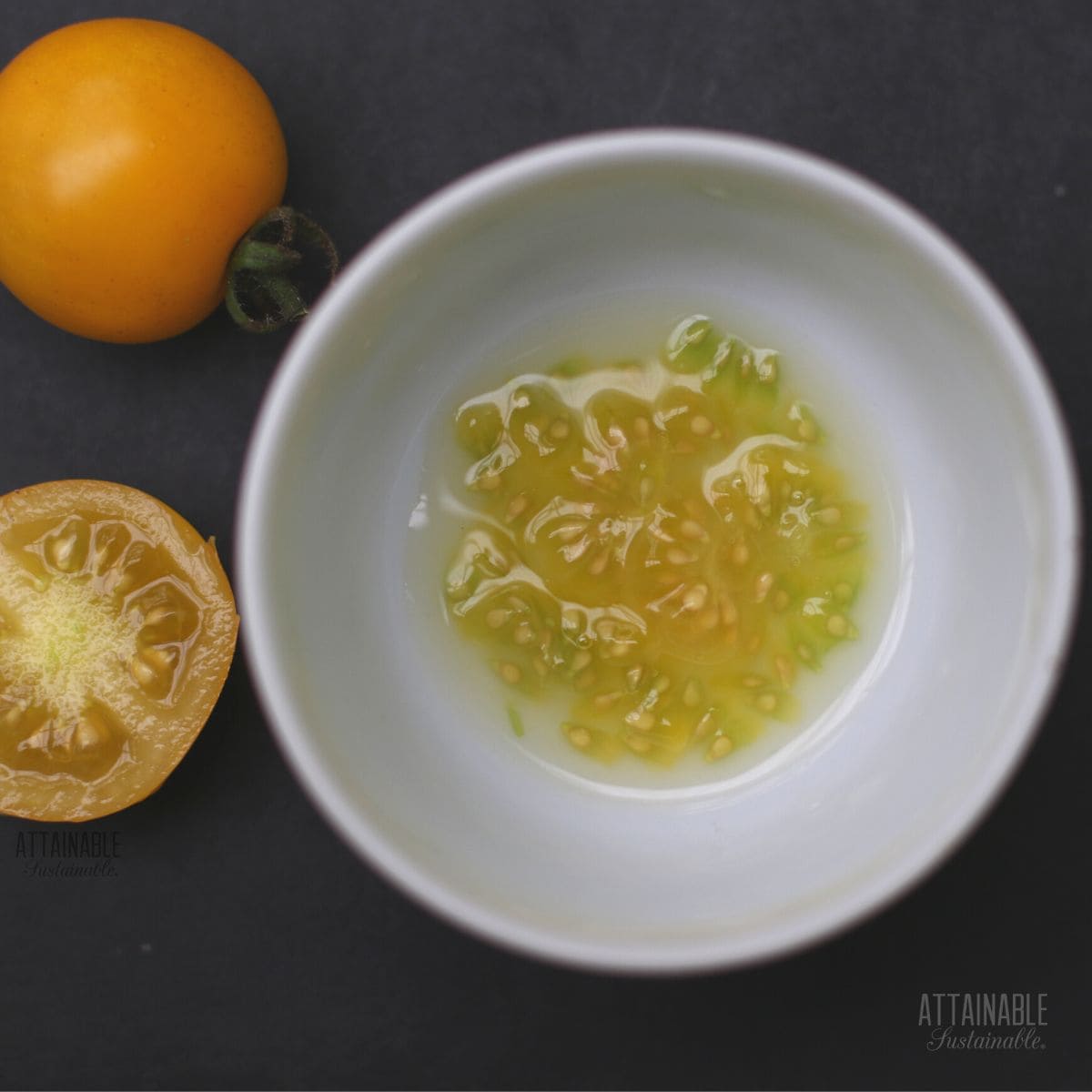
Saving Tomato Seeds
Equipment
- Small glass container
Ingredients
- Heirloom tomato
Instructions
Saving tomato seeds with fermentation:
- Select seeds from a tomato with your favorite flavor and from the healthiest plants. Slice it in half across the middle (its “equator”).
- Scoop out the seeds and their gelatinous “goo” with a spoon; place in a clean container.
- Add several tablespoons of water to cover seeds.
- Cover the container with a piece of plastic wrap; poke a small hole in the plastic with a knife or toothpick to allow for air transpiration.
- Place the container in a warm location to ferment. This takes about two or three days.
- Stir the seed and water mixture once a day and replace the plastic-wrap. (The top of the liquid will look “scummy” when the fermentation process has separated the goo from the seeds.
- Remove and discard the scummy surface material.
- Pour the tomato seeds through a fine kitchen sieve; rinse the seeds with water and stir, making sure all surfaces are thoroughly rinsed; remove as much water as possible from the seeds.
- Line a saucer with a piece of waxed paper or use a large drip coffee filter.
- Place the seeds on the saucer or filter and spread them into a single layer.
- Let the seeds dry; stir during drying to make sure seeds are evenly dry.
- Tomato seeds can take up to a week or more to dry thoroughly. Dried seeds move quickly and easily across a plate, they do not stick to each other. Store the seeds in paper packets or envelopes; label with name of tomato variety, brief description and date.
Saving tomato seeds on paper towels:
- Select seeds from a tomato with your favorite flavor and from the healthiest plants. Slice it in half across the middle (its “equator”).
- Scoop out the seeds and their gelatinous “goo” with a spoon.
- Transfer tomato pulp and seeds to a paper towel, spacing them about an inch or so apart so that each little pile has several seeds in it.
- Set in a cool place to dry, out of direct sunlight. This will take a week or two, depending upon the temperature in your location.
- Once seeds are thoroughly dry, transfer the paper towel to an envelope; label with name of tomato variety, brief description and date.
- To plant tomato seeds saved with this method, use scissors to cut between the dried seeds. Plant the square of seed-studded paper towels right into a small pot. The paper towel will break down and the seeds will sprout up.
Notes
- Store seeds in a cool, dry place until you're ready to plant them the following season.

